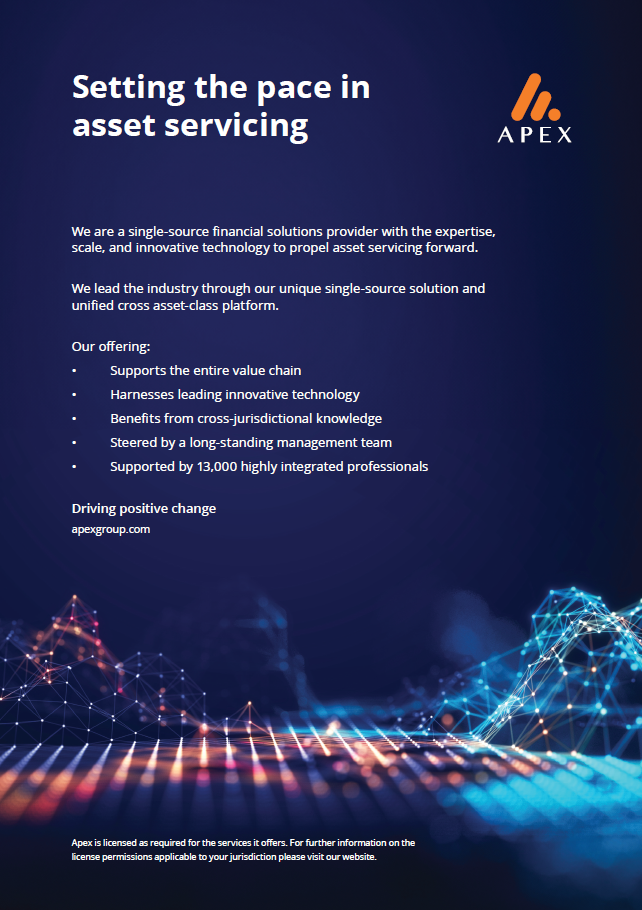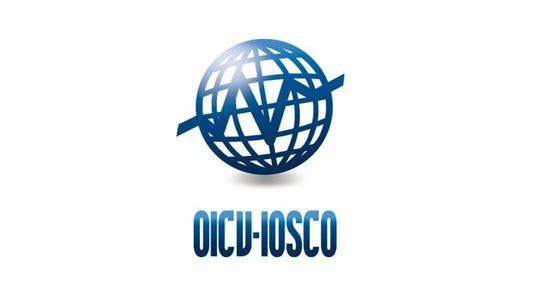Blockchain technology: Powering the transformation of asset management
By Juan Andres Dudier Mendoza, Apex Group
Published: 23 September 2024
Blockchain technology is reshaping asset management, offering unprecedented levels of transparency, efficiency, automation, and security. By fundamentally changing how assets are handled, tracked, and transacted, blockchain enhances asset management processes, unlocks liquidity for illiquid investments, opens new avenues for distribution, and improves supply chain traceability. Financial service providers increasingly regard blockchain not merely as an innovative practice but as a critical strategic tool for maintaining a competitive edge in an era of immutable digital transformation.
The impact of blockchain technology on asset management
Transparency and trust
Blockchain fundamentally operates as a decentralised ledger system that maintains a record of transactions across numerous computers, thereby ensuring the integrity and transparency of data. In the context of asset management, this means that every asset’s history and transaction details are recorded in an immutable and verifiable manner. Such a level of traceability provides exceptional trustworthiness, enabling asset managers to verify an asset’s authenticity, track its entire transaction history, and confirm its legitimacy, all without relying on intermediaries.
Improved security
Advanced encryption techniques ensure that all asset-related data on the blockchain remains secure and tamper-proof, effectively reducing the risk of unlawful access. Stringent access control mechanisms are implemented to regulate who can view, modify, or interact with asset information, which enhances both security and privacy. Blockchain’s transparent and immutable ledger plays a critical role in preventing security risks by reducing the likelihood of fraudulent activities and thereby enhancing the integrity of asset management processes. Furthermore, the decentralised nature of blockchain technology reduces single points of failure, thereby lowering the risk of cyber-attacks.
Improved liquidity
Blockchain technology improves liquidity and market access by facilitating quicker and more efficient asset trading, which enhances overall market liquidity. It also addresses regulatory challenges by managing compliance and jurisdictional issues, thus broadening market access. Additionally, blockchain reduces access restrictions by providing a transparent and decentralised platform for managing assets globally. This technology helps break down barriers, encourages cross-border investments, and supports financial inclusion on a global scale.
Enhanced regulatory compliance
Blockchain improves regulatory compliance by offering increased transparency, allowing regulators real-time access to transaction data, which helps mitigate fraud and ensure regulatory adherence. Additionally, the use of smart contracts to automate compliance processes ensures that transactions consistently meet regulatory standards, while the secure and immutable nature of blockchain data enhances audit efficiency, resulting in cost savings and improved overall compliance.
Operational efficiency
Blockchain technology is rapidly transforming asset management by significantly improving transaction efficiency and record-keeping accuracy. By using smart contracts and decentralised ledgers, blockchain streamlines transactions, making them more seamless and transparent while reducing reliance on intermediaries and reducing errors. This approach enables real-time settlements, cutting down transaction times from days to minutes, and enhances trust, security, and improved liquidity. The transparent ledger allows all parties to track transaction history, while the immutable nature of blockchain ensures accurate and tamper-proof records. Smart contracts further automate and refine record-keeping, boosting operational efficiency and reducing discrepancies.
Global reach
Traditional asset management is often constrained by geographic limitations and regulatory complexities. In contrast, blockchain operates on a global scale with minimal restrictions. This technology enables investors from around the world to participate, fostering a more inclusive and diversified market. The removal of geographical barriers also opens new opportunities for asset managers to tap into a broader pool of investors.
Potential challenges for blockchain technology
Despite its potential, blockchain in asset management faces several challenges. The changing regulatory landscape necessitates clear guidelines that distinguish blockchain technology from the risks associated with cryptocurrencies, fostering a supportive environment for innovation while ensuring investor protection. Such frameworks should consider financial instruments based on their nature and function, regardless of the underlying technology (DLT or otherwise), focusing on the assets rather than the specific technology used to represent or transact them.
Security remains a critical concern, requiring robust measures and privacy protections to safeguard sensitive data and assets. Additionally, interoperability is essential for seamless asset transfer and management, demanding consistent protocols for smooth integration of blockchain technology with existing financial systems. Finally, scalability poses a challenge as transaction volumes increase, necessitating efficient solutions to manage the growing load, particularly in large-scale asset management scenarios.
Blockchain technology ushers in a new era
Heralding a new era in asset management, blockchain technology leverages decentralisation, tokenisation, and smart contracts. It offers significant opportunities such as enhanced transparency, improved security, greater operational efficiency, and real-time settlement. These benefits extend across multiple industries, including supply chain management, finance, and real estate, showcasing the broad applicability and advantages of blockchain in asset management. While there are challenges, the potential benefits far outweigh the hurdles. Blockchain is not just a technological advancement; it is a strategic imperative for asset managers aiming to stay competitive in a rapidly transforming digital landscape.
The adoption of distributed ledger technology (DLT) solutions and fund tokenisation for managing fund orders and distribution is increasingly seen as a key component in the broader digitalisation of the fund industry. This modernisation effort will likely involve updating legacy systems, settlements, operations, distribution, and forms of collateralisation to leverage new networks and increase assets under management (AUM).
Blockchain improves regulatory compliance by offering increased transparency, allowing regulators real-time access to transaction data, which helps mitigate fraud and ensure regulatory adherence.





